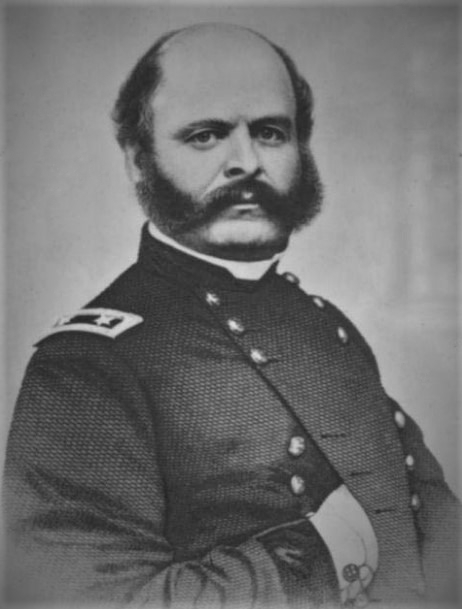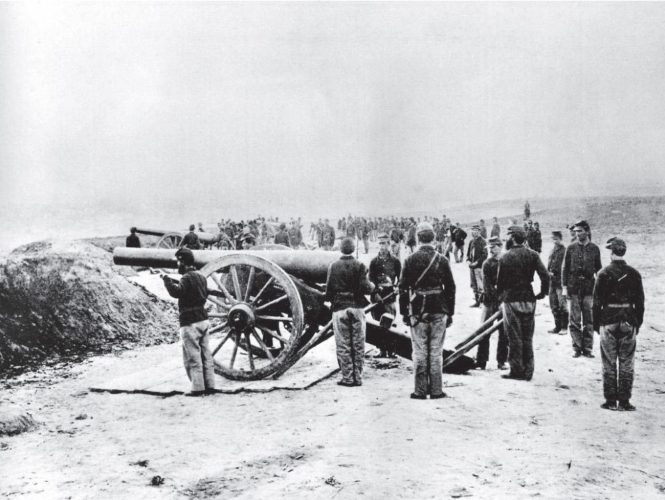


‘Treasure trove’: Civil War soldier’s letters to his wife
Riverside family donates
collection for preservation

A collection of Civil War letters between a Union soldier and his wife, detailing the tedium and bloodshed on the battlefield, has found its way into the safe hands of a historical society to preserve for all time.
Paul Perryman of Riverside and his sister, Claudia Kepner, donated to the Historical Society of Islip Hamlet in Long Island a “treasure trove” of 97 letters their ancestor Frederick Wright Sr. wrote to his wife, Phoebe, while Wright served with the cavalry from 1862 until 1865.
Paul Perryman of Riverside, photographed on Sept. 8, 2022 - has letters from the Civil war. KRIS CRAIG/THE PROVIDENCE JOURNAL

“It has great historical significance,” said Victoria Berger, curator for the society and director of the Suffolk County Historical Society Museum. “It was exciting” to receive the donation. Robert Finnegan, an Islip Historical Society member who is working with the letters, said, “It’s invaluable to the historical society for any number of reasons.”
Perryman is originally from Islip but settled in Riverside after serving with the Coast Guard.
The letters had been kept in his family for generations and ended up with his mother, Marcia Perryman, who moved to Rhode Island in the early 2000s. She died in 2008 and the letters remained with Perryman.
“Sitting in a shoe box in my basement wasn’t doing anybody any good,” Perryman said. Perryman said the historical society initially approached the family with an offer to purchase the letters, but he and his sister, who lives in Virginia, didn’t feel right selling them. “I’m not comfortable making money off this,” he said.
The historical society “knew this treasure trove of history was out there,” Berger said, but “none of the historical societies in the area knew what had become of the letters.”
Finnegan worked with Perryman to track them down. The historical society had a transcription of the letters, but nobody knew what happened to the original documents according to Finnegan.
The Civil War had a “major impact” on the town, according to Finnegan. Of about 170 men eligible to serve, 120 joined the war effort, and 18 to 20 died, he said.
Wright, who worked as a wheelwright in Islip, enlisted with the 2nd New York Cavalry on Aug. 21, 1862, at the advanced age of 41, perhaps enticed by the town’s offer of payment to enlistees, according to Berger. He served with two of his sons but also had several children still at home, she said.
Wright served mostly in Maryland and Virginia and was part of the defense of Washington, Finnegan said. He worked as a camp cook, a doctor’s orderly and guarded supply trains. He also participated in several raids, according to Finnegan.
Most of the letters address everyday issues. Wright asks his wife to send socks, food, stamps or envelopes. Berger said, “It’s a great capsule of the day-to-day life of a soldier.”
The letters also communicate the horrors of war, stories of mutilated bodies, soldiers freezing to death and committing suicide. In an early letter, Wright expressed frustration because he didn’t get a horse right away. He thought the war might end before he got his mount. But within four months, another letter showed he was anxious for the war to end.
Wright was in the Battle of Fredericksburg in December 1862, one of the largest and bloodiest battles of the Civil War. The battle was part of an effort by Maj. Gen. Ambrose Burnside of Rhode Island to beat Confederate Gen. Robert E. Lee to the Confederate capital of Richmond, according to the website of the American Battlefield Trust. The battle ended in a Union defeat. The Union Army suffered more than 12,500 casualties, while the Confederate Army had about 6,000 casualties.
Regarding Fredericksburg, Wright wrote the following on Dec. 15, 1862:
“Fighting every day now we were on the battlefield two days and one night not one of us got hurt but it was sad to see the infantry killed & wounded by the Hundreds I was keeping guard so that the Rebels cannot cross the river and get into the rear. The river is narrow so that we talk across to the Rebels. The Pickets do not fire on one another now. We had quite a sociable chat with them the other night and they say that they want to see the war settled…”

Maj. Gen. Ambrose E. Burnside
PROVIDENCE JOURNAL, FILE
He added, “I have seen heavy fighting and come out safe…tell the children that I have seen men with their body cut up in all kinds of ways. They went and was carried by me by the hundreds. The wagons was at work until 3 oclock in the morning getting the wounded that could not be got till they stopped fighting at dark.”
Wright mentioned Burnside in a Dec. 27, 1862, letter from near Belles Plain, Va., “I do not think that Burnside knew what he was doing when he took the Army into a slaughter house like that. The Rebels had been fixing a month and he knew it, but there will be a turn around before long the newspapers say the soldiers feel satisfied, but you would not think so if you hear them talk.”
Wright mentioned Burnside again in a letter Aug. 5, 1864, from a camp near Petersburg, Va. “We were in hearing distance of the fight Burnside had with the Rebels when he blew up one of their Forts but our Army lost heavily. The dead and wounded lay in heaps a day or two between the lines it was a horrible sight. We are moving every few days I do not know where we shall get to next but I hope Grant will do something effective soon that will stop this War…”
Perryman and his sister, Kepner, actually donated the letters back in 2019. Noting that the collection appears to have every letter Wright sent his wife and also includes Wright’s enrollment and discharge papers, Berger said, “It’s a pretty significant collection.” The preservation work took time and care. Berger said they initially had to store the letters for five months in perfect humidity before they could even unfold them.
The letters have now been preserved and digitized. Finnegan has studied each of the letters and transcribed them, pairing them with illustrations and historical background. Enhanced copies of the letters will be included in two books that will be distributed to area libraries and schools, according to Finnegan.
For Perryman, the letters have brought him closer to a relative from the past and also piqued his curiosity. He said, “I would love to be able to sit in a room with somebody like that and pick their brain.”
perry@providencejournal.com
On Twitter: @jgregoryperry

Federal troops position artillery on Stafford Heights, Va., to shell the town of Fredericksburg and the Confederate forces massed on the opposite bank of the Rappahannock River in the Battle of Fredericksburg during the American Civil War in December 1862. MATHEW B. BRADY/AP